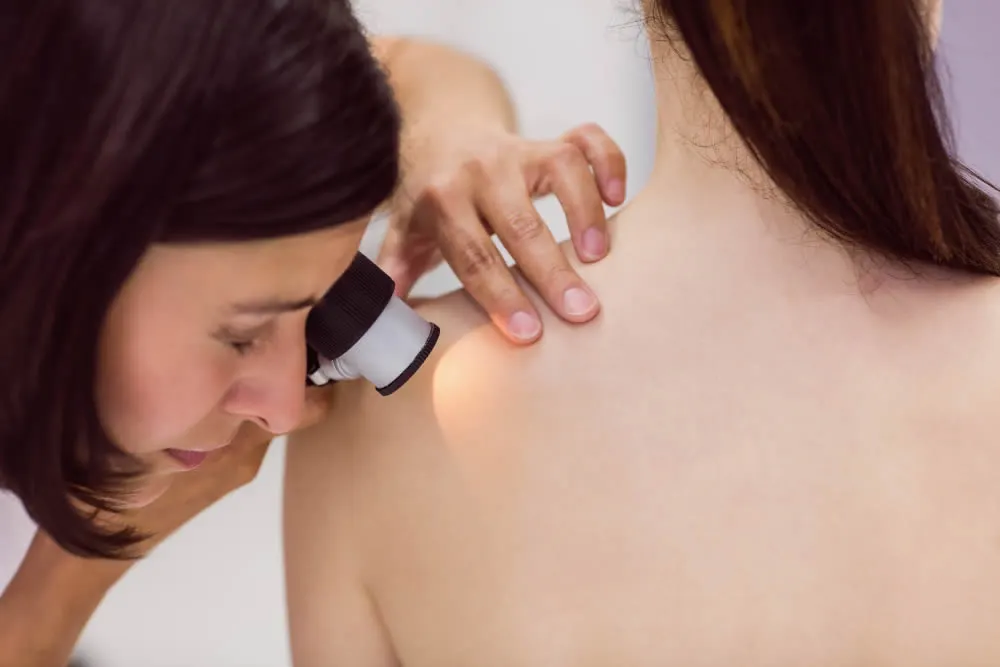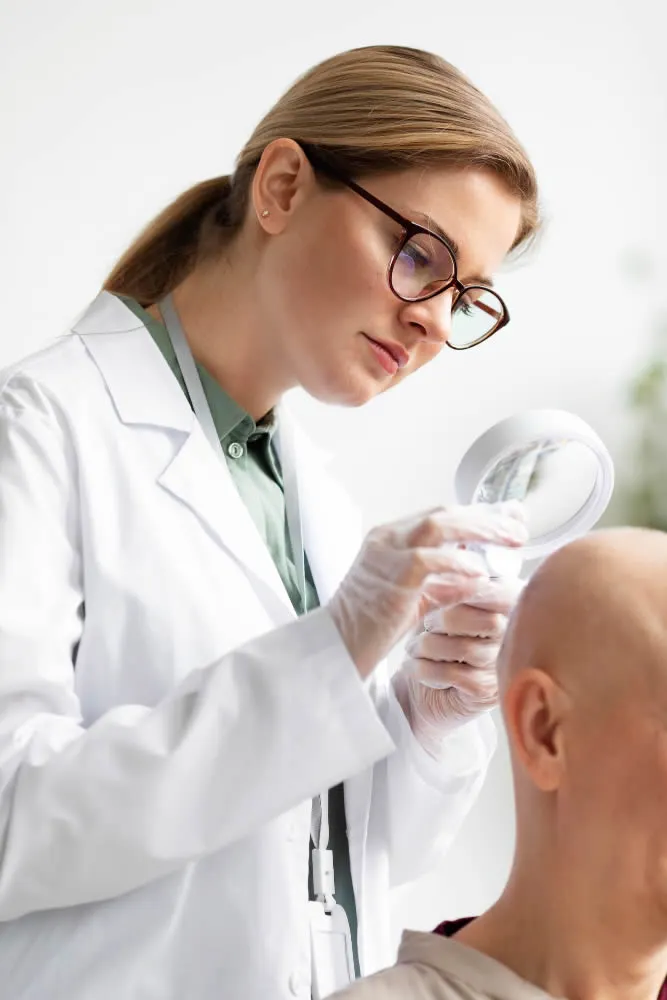What is Dermatofibrosarcoma Protuberans?
Dermatofibrosarcoma Protuberans (DFSP) is a rare type of soft tissue sarcoma that primarily affects the deeper layers of the skin. It is known for its slow-growing nature and often presents as a firm nodule on the skin’s surface. Although DFSP is generally non-metastatic, meaning it doesn’t easily spread to other body parts, it requires medical attention due to its potential to invade surrounding tissues over time.

Causes of Dermatofibrosarcoma Protuberans
The exact cause of DFSP remains unknown. While genetic factors are believed to play a role, there is no conclusive evidence to pinpoint a specific origin. DFSP most commonly occurs in adults aged 20 to 50 and often emerges on the chest, followed by the arms, legs, head, and neck. Although certain genetic mutations have been associated with DFSP, the interplay of these factors in its development is not yet fully understood.
Symptoms and signs of Dermatofibrosarcoma Protuberans
The primary indicator of DFSP is the emergence of a raised, firm lump on the skin, which might exhibit shades of reddish, purple, or tan. DFSP can also contribute to skin thinning and breakdown, leading to ulcer formation (open sores).
Additional symptoms associated with DFSP encompass:
- Pain
- Itching
- Burning sensation
- Tingling
- Numbness
Given its gradual growth, DFSP often remains unnoticed for extended periods, potentially spanning months or even years. In its initial stages, DFSP may manifest as:
- A pimple-like growth or rough skin patch
- Minimal to no pain or tenderness at the site of the growth or patch
- Minor alterations in the growth or patch’s appearance
Treatment of Dermatofibrosarcoma Protuberans
Surgical interventions
- Excision (Surgery): This procedure involves surgically removing the tumor and a margin of healthy surrounding tissue. This approach aims to capture any potential cancer cells that may have extended beyond the visible tumor.
- Mohs Surgery: Many DFSP patients may be recommended for Mohs surgery, a specialized technique exclusively employed for skin cancer treatment. Mohs surgery enables precise tumor removal while conserving more healthy tissue than traditional excision surgery.
Contact our office today to learn about all the available treatment options.

FAQs about Dermatofibrosarcoma Protuberans
Can Dermatofibrosarcoma Protuberans occur in children or older adults?
DFSP is most commonly diagnosed in adults between the ages of 20 and 50. While it’s rare in children and older adults, cases have been reported across a wider age range.
Is there a genetic predisposition to developing DFSP?
While genetic factors are believed to play a role in DFSP’s development, the condition isn’t generally inherited straightforwardly. Specific genetic mutations have been associated with some cases, but the overall genetic mechanism remains complex and is still being studied.
Can DFSP recur after successful treatment?
Yes, DFSP tends to recur even after successful treatment. This emphasizes the importance of regular follow-up appointments with a medical professional to monitor for potential recurrence.
Are there any lifestyle factors that increase the risk of DFSP?
Currently, no specific lifestyle factors are definitively linked to an increased risk of developing DFSP. The condition doesn’t seem strongly associated with environmental exposures, habits, or behaviors. However, it’s important to prioritize overall skin health and promptly address any concerning skin changes.
Is there a dermatologist near me in Salt Lake City that offers treatment for Dermatofibrosarcoma Protuberans?
Yes. At our Salt Lake City dermatology office, we offer treatment for Dermatofibrosarcoma Protuberans to patients from Salt Lake City and the surrounding area. Contact our office today to schedule an appointment.

